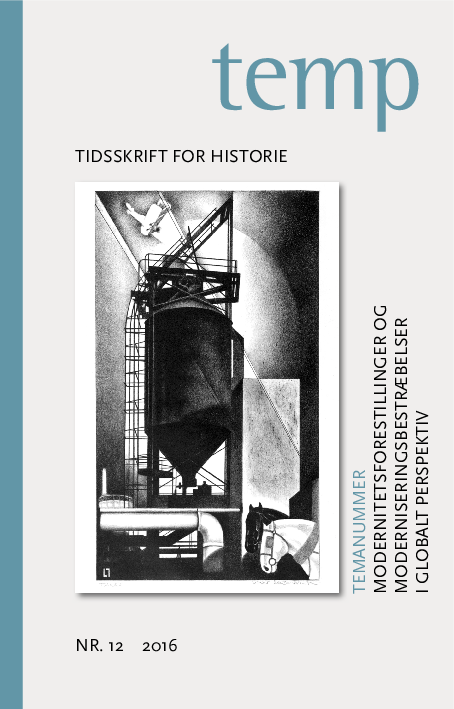Ny artikel i temp - tidsskrift for historie
Kristian Hvidtfelt Nielsen udgiver sammen med Allan Lyngs Kjærgaard artiklen "At se og fejle som en velfærdsstat: Moderniseringsbestræbelser og -problemer i Grønland efter anden verdenskrig"

ABSTRACT [DK]
KRISTIAN HVIDTFELT NIELSEN & ALLAN LYNGS KJÆRGAARD
At se og fejle som en velfærdsstat
Moderniseringsbestræbelser og -problemer i Grønland efter anden verdenskrig
Efter anden verdenskrig ønskede ledende grønlandske og danske politikere at knytte Grønland tættere til Danmark, politisk som socialt, økonomisk og kulturelt. Med nedsættelse af den store Grønlandskommission i 1948 og udgivelsen af dens monumentale betænkning på 1.100 sider fra 1950, der fremlægger en samlet plan for hele Grønland og alle sektorer, kom konturerne af det moderne Grønland for første gang til syne. Det var med James C. Scotts ord en højmodernistisk vision for et nyt og bedre Grønland, hvis gennemførsel forudsatte en yderligere synliggørelse af Grønlands befolkning, økonomi, geografi, naturressourcer, infrastruktur og politisk administration fra centralt hold. I artiklen argumenterer vi for, at den danske grønlandspolitik i løbet af de følgende årtier gennemgik en vis hybridisering, da det grønlandske samfund og den grønlandske natur ikke uden videre lod sig indrullere i det højmodernistiske tankesæt. Resultatet var, at Grønland frem mod indførslen af hjemmestyret i 1979 i stigende grad blev formet i spændingsfeltet mellem de danskledte moderniseringsbestræbelser og de deraf følgende moderniseringsproblemer, der opstod i Grønland.
ABSTRACT [UK]
KRISTIAN HVIDTFELT NIELSEN & ALLAN LYNGS KJÆRGAARD
Seeing and failing like a welfare state:
Modernization efforts and problems in Greenland after World War II
After World War II leading politicians wanted to bring Greenland and Denmark closer together, politically as well as socially, economically and culturally. With the establishment of the large Greenland Commission in 1948 and the publication of its monumental, 1110 pages long white paper in 1950, the contours of modern Greenland appeared for the first time. In the words of James C. Scott the Commission had produced a high-modernist vision for a new and improved Greenland. The implementation of this vision would require additional legibility with respect to Greenland’s population, economy, geography, natural resources, infrastructure and political administration, which, according to the planners, had to be established by Danish expertise. We argue that the Danish Greenland policy in the following decades underwent hybridization as Danish experts and politicians gradually discovered the difficulties of enrolling the Greenlandic people and Greenland’s nature into their high-modernist schemes. As a result, Greenland increasingly up until the introduction of the home rule in 1979 took shape in the area of tension between Danish-led modernization efforts and the consequent modernization problems that occurred in Greenland.
